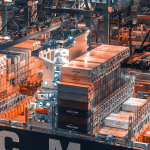From Assembly Lines to Artistry
Transitioning from the structured and repetitive nature of assembly lines to the realm of artistry represents a profound shift in both work dynamics and creative expression. In the context of assembly lines, the focus is on efficiency, precision, and mass production, where workers engage in repetitive tasks to manufacture goods at scale. This environment often prioritizes uniformity and consistency, leaving little room for individual expression or creative input.On the contrary, embracing artistry introduces a paradigm where craftsmanship and creativity take center stage. Artistry involves a departure from rigid routines and encourages a more fluid and innovative approach to work. The emphasis shifts from mechanical precision to individual skill, intuition, and the pursuit of aesthetic excellence. In this context, each creation becomes a unique expression of the artist's vision, fostering a sense of individuality and authenticity.
The transition from assembly lines to artistry signifies not only a change in the nature of work but also a transformation in the mindset of individuals involved. It requires a shift from adhering strictly to predefined processes to engaging in exploration, experimentation, and the cultivation of personal style. Artistry allows for a more profound connection between the creator and their work, fostering a sense of fulfillment and purpose that may be absent in the regimented environment of assembly lines.
Moreover, the move to artistry underscores the importance of valuing creativity and craftsmanship in the production process. It acknowledges the intrinsic value of human ingenuity and the contribution of unique perspectives to the creation of meaningful and impactful work. As individuals transition from being cogs in a well-oiled machine to becoming artisans of their craft, the resulting products bear the imprint of human artistry, embodying a richness and depth that transcends mere functionality.




